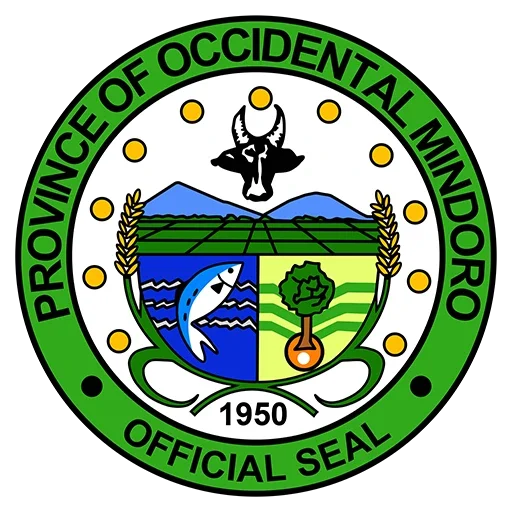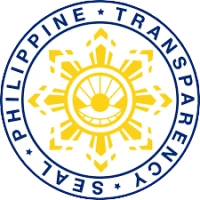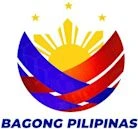ECOLOGICAL PROFILE
Founded: June 13, 1950 through Republic Act 505 seeking the division of Mindoro into two provinces – Oriental Mindoro and Occidental Mindoro
Classification: Level 1
Population: 487, 414 (2015 Census)
Land Area: 5,879.85 km2 (2,264.76 sq. mi)
Dialect: Tagalog, Ilokano, Kinaray-a (Bisaya), Mangyan Dialects
Weather: Occidental Mindoro has two distinct weather types: rainy season and dry season. Rains begin to fall in the province in late May, intensifying through June, July, August, September and October, then gradually subsides in November. The months of August and September are the wettest period, with storms directly passing through the area. On the other hand, dry season starts in November, with rainfall subsiding in intensity, and altogether ceasing in January, February, March and April. March and April are the driest period, with cloudless skies and parched earth characterizing the general area. Temperature range is from 26 °C (79 °F) in the windy uplands to 32 °C (90 °F) in the lowlands.
Transportation: By air, it takes 30 minutes from Manila to San Jose via small aircraft company providing chartered flights to the province. By Sea, it takes 3 hours from Batangas City pier to Abra de Ilog Pier via Roll-on, Roll-off vessels of the Montenegro Shipping Lines and Besta Lines.
Major Industries: Agriculture, Farming, Fishing and Aqua Farming, Salt and Food Processing
Major Product: Rice, Corn, Salt, Mangoes
Source of Livelihood: White- and Blue-Collar Jobs, Farming, Livestock and Poultry Raising, Trading and Construction
Article Source: www.wikipedia.org & Occidental Mindoro Provincial Tourism Office7
| BRIEF HISTORY OF OCCIDENTAL MINDORO | ||||||||||||||||||||||||||||||||||||||||||||||||||||||||||||||||||||||||||||
|
Mindoro Island was originally known to the ancients as Ma-i. It was formally called Mait, and known to the Chinese traders before the coming of the Spanish. Its existence was mentioned in the old Chinese chronicles in 775 A.D. and more elaborately in 1225. It was a major anchorage in the Southeast Asia trade route during the pre-Philippines period. Chinese, Arab and Indian merchants traded with the natives. In 1570, the Spanish began to explore the island and named it Mina de Oro (“mine of gold”) after finding some of the precious metal, though no major gold discoveries were ever made. The natives of Mindoro were called Manguianes by the Spaniards. But the natives refer to themselves by their ethnic or clan identification. There were seven such ethnic or clan distinctions, which are differentiated by language and areas where each can be found. The Mangyans, as they are now anthropologically known, do not have a warrior society. They are a peaceful, shy but friendly people. They are rarely known to be hostile, and have had no significant record of violent conflict with other people in the entire history of the province. They grow root crops in forest clearings (slash and burn farms), and hunt wild animals in the forest for their meat needs. There are no authentic documents in existence explaining the original stock of the Mangyan people, but later theoreticians postulate that they migrated from Indonesia before 775 A.D. They hopped from island to island, until finally settling down permanently in Mindoro. It appeared that clan settlements existed in the North as well as in the southern ends of the island. By 779, the southwest coast of the island was already a known trading center, and its fine natural harbor frequented by Arab, Indian and Chinese maritime traders who plied the route. But there was no attempt of subjugation, just trading. Republic Act No. 505, an Act to Create the Province of Occidental Mindoro and Oriental Mindoro, approved by Congress on June 30, 1950 created the Province of Occidental Mindoro and its sister province, Oriental Mindoro. Article Source: www.wikipedia.org & Occidental Mindoro Provincial Tourism Office |
||||||||||||||||||||||||||||||||||||||||||||||||||||||||||||||||||||||||||||
| CITIES AND TOWNS | ||||||||||||||||||||||||||||||||||||||||||||||||||||||||||||||||||||||||||||
The Occidental Mindoro provinceis divided into 11 Municipalities:
|
||||||||||||||||||||||||||||||||||||||||||||||||||||||||||||||||||||||||||||
| ISLANDS | ||||||||||||||||||||||||||||||||||||||||||||||||||||||||||||||||||||||||||||
There are 4 outlying islands surrounding the mainland of Occidental Mindoro which are under the jurisdiction of the province.
|
||||||||||||||||||||||||||||||||||||||||||||||||||||||||||||||||||||||||||||
| POINTS OF INTEREST | ||||||||||||||||||||||||||||||||||||||||||||||||||||||||||||||||||||||||||||
The following is a list of points of interest relating to the Occidental Mindoro province:
|
||||||||||||||||||||||||||||||||||||||||||||||||||||||||||||||||||||||||||||
| GEOGRAPHICAL LOCATION | ||||||||||||||||||||||||||||||||||||||||||||||||||||||||||||||||||||||||||||
| Mindoro Island, the seventh largest island in the Philippines, is contained in the quadrangle bounded by 12°9′ north , latitude 121°15′ east longitude. Occidental Mindoro is one of the two provinces compromising Mindoro Island. It is located 45km. south of Batangas and north of Visayas. The entire eastern portion of the province is bounded by Oriental Mindoro and the western portion by the Apo East Passage. On the north, it bounded by the Calavite and Verde Island Passage and on the south by Mindoro Strait. The southernmost tip of Occidental Mindoro lies in the area of Sibuyan Sea. Like most of the provinces in the Philippines, the lack of technical description defining the boundaries of the province causes territorial dispute with its neighboring province, Oriental Mindoro. | ||||||||||||||||||||||||||||||||||||||||||||||||||||||||||||||||||||||||||||
| POLITICAL BACKGROUND | ||||||||||||||||||||||||||||||||||||||||||||||||||||||||||||||||||||||||||||
In 1950, the bill introduced in Congress by Mindoro Congressman Raul Leuterio, seeking the division of Mindoro into two provinces –Oriental Mindoro and Occidental Mindoro, was approved and become Republic Act No. 505.
It was 1950 when the President of the Philippines appointed Damaso V. Abeleda as the first Governor of Occidental Mindoro. On November 13, 1951, the first election was held in Occidental Mindoro. Federico Castillo was elected as the first governor of the province. Governor Castillo served from 1951 to 1956. The succeeding elected governors were Mariano Tajonera (1956-1959) and Arsenio L. Villaroza (1960-1986), while Peter O. Medalla, Jr., was appointed as OIC-Governor from 1986-1988, he was elected Governor until 1991. Josephine Y. Ramirez-Sato was elected Governor for three consecutive terms (1992-2001). Jose T. Villarosa served from 2001-2004. Sato won against Villarosa in 2004. She completed her terms as Governor from 2004-2013. Mario Gene J. Mendiola served from 2013-2019 and Eduardo B Gadiano from 2019 up to present.
Elected Vice-Governors were: Catalino Punzalan (1959 – 1962), Felix L. Gabriel, Sr. (1963 – 1966), Nestor Abeleda (1967 – 1970), Gonzalo C. Zoleta, Sr. (1981 -1986), Carlos Tria (1986 – 1987), Josephine Y. Ramirez-Sato (1988 – 1991), Crispin P. Perez, Jr. (1992 – 1995), Anita A. Villlaroza (1995 – 1998), Godofredo B. Mintu (1998 – 2001), Ramon M. Atienza (2001 – 2004), Mario Gene J. Mendiola (2004 – 2013) and Peter J. Alfaro (2013 – Present).
Elected Assemblymen/representatives (before EDSA Revolution were Judge Jesus V. Abeleda (1951-1954); Felipe Abeleda (1954-1965); Pedro Medalla, Sr.; (1966-1972) and Pedro T. Mendiola, Sr., (1978-1993); Jose T. Villarosa (1992-1998); Ricardo V. Quintos (a Constitutional Convention Delegate in 1973), after winning his protest against his rival Ma. Amelita C. Villarosa, won the seat and officially declared representative, six months before the term ended (1998-2001). Josephine Y. Ramirez-Sato (2001-2004); Amelita C. Villarosa (2004 to 2013) and again, Josephine Y. Ramirez-Sato (2013 – present).
Table 1.1: List of Governors
|
||||||||||||||||||||||||||||||||||||||||||||||||||||||||||||||||||||||||||||
| FAQs | ||||||||||||||||||||||||||||||||||||||||||||||||||||||||||||||||||||||||||||
The following are the most frequently asked questions about the Occidental Mindoro province.
Where in the Philippines is Occidental Mindoro located?
Occidental Mindoro occupies the western section of Mindoro island.
Is Occidental Mindoro a city or province?
Occidental Mindoro is a province.
What is the Capital of Occidental Mindoro?
The capital of Occidental Mindoro is Mamburao.
What is Occidental Mindoro known for?
Occidental Mindoro is known for paddy fields and mountain ranges.
How do I get to Occidental Mindoro?
There are several ways to get to Occidental Mindoro, the most common being from Manila:
RESOURCE: Best Online Transportation Resource for the Philippines How many islands are in Occidental Mindoro? There are 4 islands in Occidental Mindoro province. What does Occidental Mindoro mean? Mindoro is derived from the Spanish term “mina de oro” which means “gold mine”. How Safe is Traveling in Occidental Mindoro? Occidental Mindoro is generally safe for locals and tourists. Is the climate in Occidental Mindoro the same as the rest of the Philippines? The climate in Occidental Mindoro province is considered tropical with significant rainfall most months of the year. To learn more about the various climate types in the Philippines, and for a Climate Map, click the link below… |




